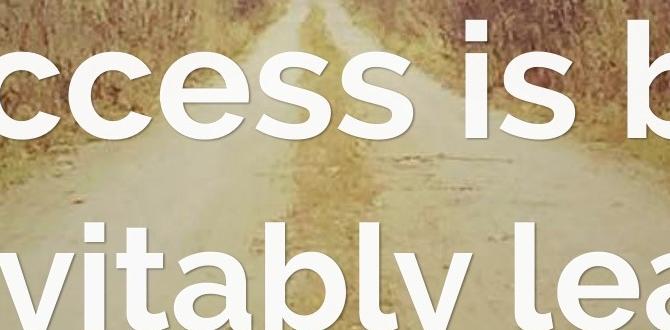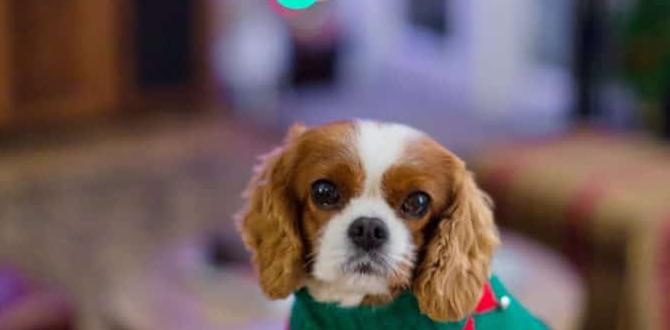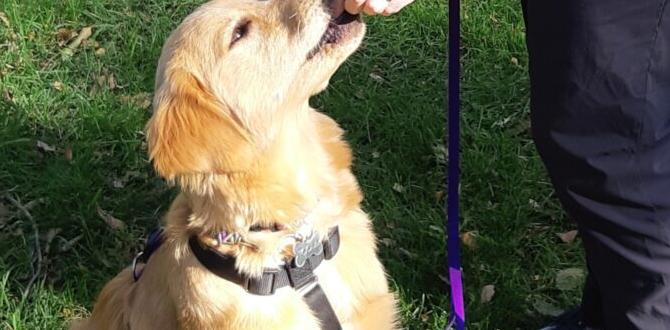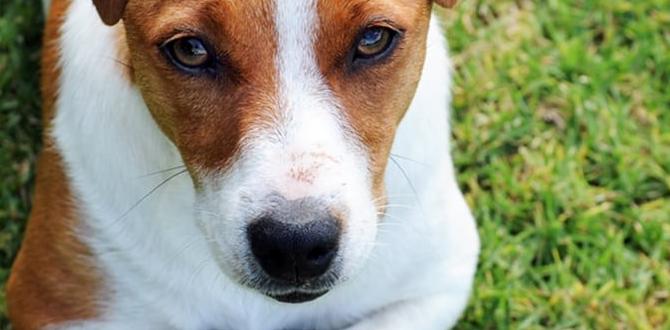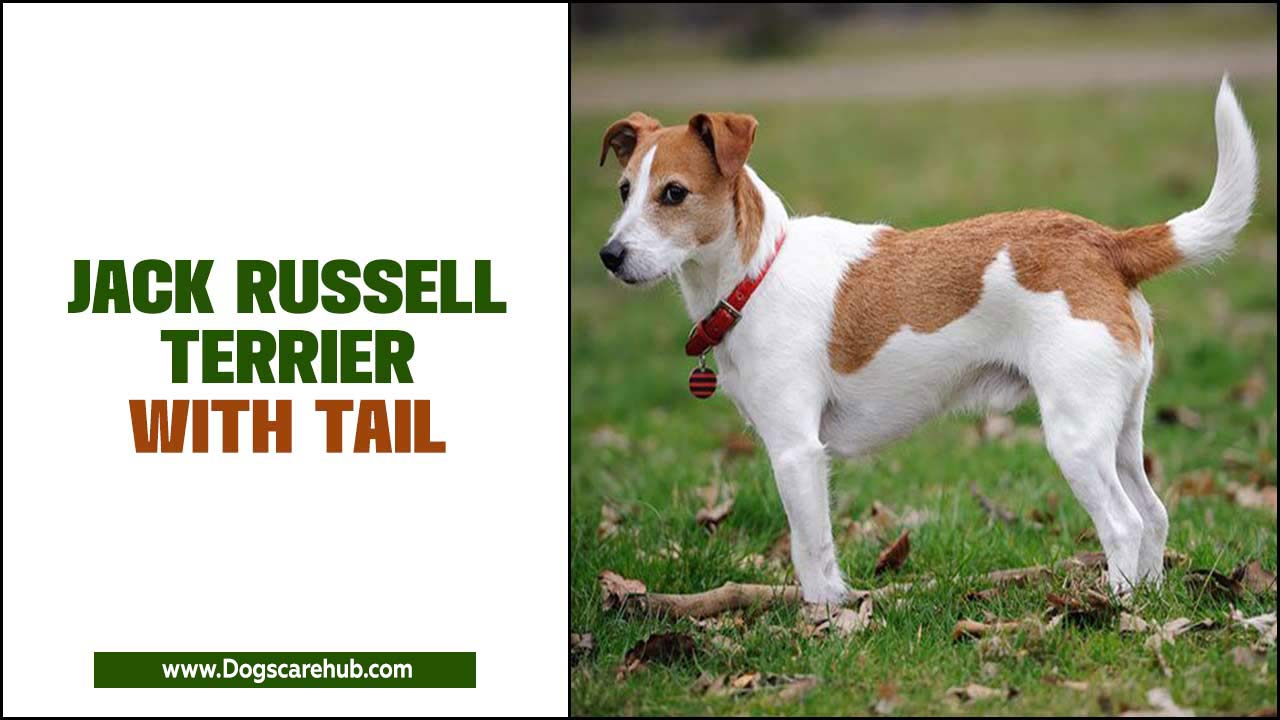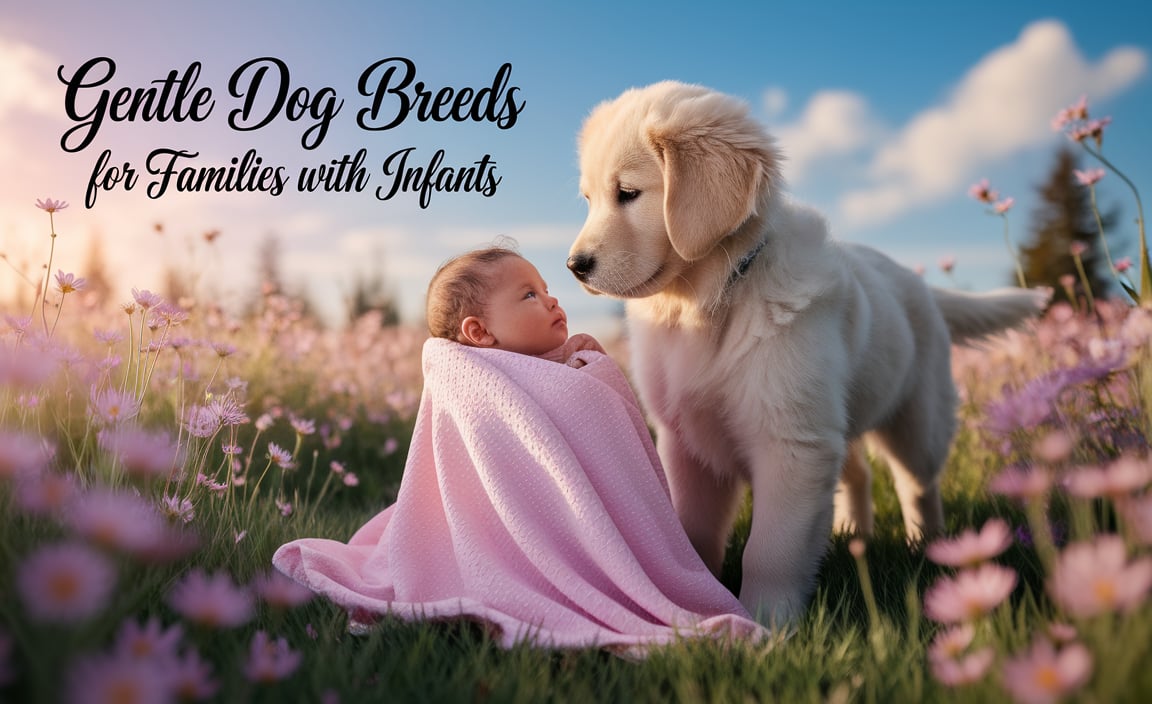Quick Summary: Stop your dog jumping on people naturally with simple positive reinforcement. Teach them that four paws on the floor gets them attention and praise. This guide provides easy, step-by-step methods to help your dog learn polite greetings.
Does your furry friend greet every visitor with an enthusiastic leap? It’s a common behavior, but it can be a bit overwhelming, especially for guests or children. That excited nudge, those muddy paws—it’s your dog’s way of saying hello, but it’s not always the most polite one. The good news is, you can gently guide your dog to greet people with all four paws on the floor. This guide is here to help you understand why they jump and, more importantly, how to teach them a better, calmer way to say hello, naturally and effortlessly.
Understanding Why Dogs Jump on People
Before we dive into solutions, it’s helpful to understand what’s driving this behavior. Dogs jump for a variety of reasons, and most of them are rooted in their natural instincts and desire for connection.
Social Greetings and Excitement
For many dogs, jumping is a learned or instinctive way to get closer to our faces. Think about how puppies greet their mothers. They’d lick around their mouths to solicit food. In a human context, jumping can be a similar attempt to get attention and affection – they want to be at your level! It’s a sign of excitement and a way to engage with you and visitors.
Seeking Attention
Even if the attention isn’t always positive (“Down!”), any attention is still attention for a dog. If jumping is the quickest way to get you to interact with them, they’ll continue to do it. They’ve learned that a leap can be a guaranteed way to be noticed, whether it’s with a pat, a push away, or a stern word.
Lack of Training or Unclear Boundaries
Sometimes, dogs jump simply because they haven’t been taught otherwise. If they were allowed to jump as puppies, and especially if it was encouraged or met with positive attention, they’ll carry that habit into adulthood. Dogs thrive on clear rules, and without them, they’ll often default to instinct.
Breed Tendencies
While any dog can jump, some breeds with high energy levels or a strong desire to be close to their people might be more prone to this behavior if not properly managed. Breeds known for their exuberance, like Labrador Retrievers or Golden Retrievers, might jump more readily when excited.
The “Effortless” Approach: Positive Reinforcement
The most effective and kindest way to address dog jumping is through positive reinforcement. This means rewarding the behavior you want to see (calm greetings, four paws on the floor) rather than punishing the behavior you don’t. It’s about teaching your dog what to do instead of just telling them what not to do.
The Core Principle: Reward the Calm
The goal is to make it clear to your dog that keeping all four paws on the ground is the key to getting attention, praise, and even treats. Every time your dog is calm and has all four paws on the floor, especially when people are around, they should be rewarded. This reroutes their natural greeting instincts into a more acceptable behavior.
Key Elements of Success
- Consistency is Crucial: Everyone in the household and all visitors need to be on the same page. If one person allows jumping and another discourages it, your dog will become confused.
- Timing is Everything: You need to reward the desired behavior as it happens or immediately after. This helps your dog connect the reward with the correct action.
- Patience is a Virtue: Changing a habit takes time. Don’t get discouraged if you don’t see immediate results. Small, consistent steps lead to big changes.
Step-by-Step Guide to Teaching Polite Greetings
Let’s break down the process into manageable steps. This method focuses on teaching your dog a new way to interact that’s both acceptable and rewarding.
Step 1: The “Four on the Floor” Foundation
Before incorporating guests, practice with your household members. When your dog approaches you, calmly say “hello.” If all four paws stay on the ground, immediately give them a treat and verbal praise (“Good dog!”). If they jump up, calmly turn away or step back, withdrawing attention. The moment they have all four paws on the floor again, turn back and reward them.
Practice Scenarios:
- When you enter a room: If your dog comes to greet you, reward them for staying down.
- When you sit down: If your dog leans on you or nudges you calmly, reward that.
- When they are generally calm: Sprinkle in rewards just for being settled and peaceful near you.
Step 2: Introducing Controlled “Guest” Interactions
This is where you bring in the real-world practice. You’ll need the help of a friend or family member who understands the plan.
The “Guest” Protocol:
- On-Leash Control: Have your dog on a leash, with the helper standing a short distance away. This allows you to manage their proximity without physical restraint that could cause anxiety.
- When the Guest Enters: Instruct your helper to ignore your dog entirely if they jump. No eye contact, no talking, no touching.
- The Reward Moment: The instant your dog’s paws touch the floor, cue them with a positive word (“Yes!” or “Good!”) and reward them with a high-value treat. Your helper can then offer gentle praise or a pat only when the dog is calm and has all four paws on the floor.
- Repeat and Progress: Have your helper step closer only when your dog is consistently staying on the floor. Gradually work up to more natural greeting distances. If your dog jumps again, the helper simply withdraws attention until the dog is calm.
Step 3: Reinforcing Calmness in More Distracting Environments
Once your dog is doing well with predictable helpers, start practicing in slightly more challenging situations.
Variations to Try:
- Different Visitors: Practice with people of different ages and sizes.
- Less Predictable Greetings: Have guests approach in slightly different ways.
- Walking Past People: If your dog tends to jump at people as you walk by on the street, practice rewarding them for looking at the person and remaining calm, with all paws on the ground, even if it means giving treats from a distance.
Step 4: Managing Excitement (The “Nothing In Life Is Free” Approach)
This is a gentle way to teach your dog that good things only happen when they are calm and well-behaved. It’s not about deprivation, but about creating opportunities for them to earn rewards through good behavior.
How to Apply It:
- Mealtime Rewards: Make your dog “sit” or “down” before their food bowl is placed down.
- Leash Greetings: If your dog gets overly excited for a walk, make them sit patiently before you clip on the leash.
- Playtime: Start tug-of-war or fetch only after a moment of calm engagement.
This reinforces that their focus and calm demeanor are what earn them these positive experiences.
Tools and Accessories to Aid Training
While positive reinforcement relies on your behavior and your dog’s understanding, a few tools can make the process smoother and safer.
Recommended Equipment:
- High-Value Treats: Small, soft, and extremely tasty treats that your dog loves. Think pieces of cheese, cooked chicken, or special training treats. These will be more motivating than their regular kibble.
- Standard Leash (6-foot): Essential for maintaining control during training sessions, especially when guests are involved. It prevents your dog from practicing the jumping behavior unchecked.
- Treat Pouch: Keeps treats easily accessible so you don’t miss critical reward moments.
- Clicker (Optional): A clicker can be a helpful tool for marking the exact moment your dog does the right thing. The click sound becomes a bridge, followed by a treat. This precise timing can speed up learning.
What to Avoid:
- Punishment-Based Tools: Avoid choke chains, prong collars, or spray bottles used as deterrents. These can create fear, anxiety, and mistrust, and they don’t teach the dog what you do want them to do.
- Yelling or Physical Force: These methods are rarely effective long-term and can damage your relationship with your dog.
For more information on positive reinforcement training, consider resources from organizations like the ASPCA, which offers excellent guidance on humane dog training techniques.
Troubleshooting Common Issues
Even with a solid plan, you might encounter some bumps along the road. Here’s how to handle them.
My Dog Still Jumps When I Turn My Back
This often happens when the dog feels they are losing your attention. When you have your back turned, they might jump to regain it. Simply turn around again and reward them for standing or sitting calmly with four paws on the floor. If this is a persistent problem, consider impulse control exercises for your dog. Resources on teaching a solid “stay” or “leave it” can be very beneficial and improve overall self-control.
Guests Don’t Follow the Rules
This is a common challenge! Before guests arrive, have a quick chat about your training plan. Provide them with some high-value treats and explain that the only way your dog gets attention is by remaining calm. You can even have them practice a few rewarded “four on the floor” greetings themselves. If a guest is unwilling to participate, it might be best to put your dog in another room or on a leash for their safety and to maintain training consistency.
My Dog Jumps Even When I Use Treats
If treats aren’t working, consider if the treats are motivating enough. Are they fresh and highly desirable? Is the timing of your reward off? You might be rewarding after the jump has already happened. Try to anticipate the jump and reward the moment before it starts, or immediately when their paws touch the floor. Also, ensure you’re not inadvertently rewarding the jump with too much excited talking or petting when they are mid-air.
The Jumping is a Problem for Specific Visitors (e.g., Toddlers)
This is a crucial safety concern. For very young children or elderly individuals, jumping can be dangerous. In these situations, it’s best to management your dog’s access. Keep them on a leash, behind a baby gate, or in another room when these visitors are present until your dog’s greeting behavior is reliable. Prioritize safety. Organizations like the American Kennel Club (AKC) offer further advice on puppy socialization and training that contributes to a well-behaved dog.
My Dog Is Over-Excited and Won’t Calm Down
Sometimes, a dog’s energy levels are so high that controlled greetings feel impossible. Ensure your dog is getting enough physical exercise and mental stimulation throughout the day. A tired dog is often a calmer dog. Consider longer walks, puzzle toys, or agility games. If a dog is consistently hyperactive, it might be worth consulting with a veterinarian to rule out any underlying health issues or a certified professional dog trainer to assess their overall behavior and needs.
Integrating “Four on the Floor” into Daily Life
The “effortless” part of this fix comes from making “four on the floor” the new normal for your dog. It’s about consistency and turning their natural desire for interaction into a learned, positive behavior.
Making it a Habit
Think of it like teaching any other command. The more consistently you practice and reward, the stronger the habit becomes. Every time someone enters your home, it’s an opportunity for your dog to practice their polite greeting. Every time you walk past someone on the street, it’s another chance.
The Role of Exercise and Mental Stimulation
A dog that has its energy expended appropriately is less likely to feel the need to “explode” with excitement and jump. Adequate daily exercise, whether it’s long walks, runs, or playtime in the park, combined with mental challenges like puzzle feeders, scent games, or training sessions, can significantly reduce overall arousal levels. A calm, well-exercised dog is more receptive to learning and behaving politely. According to the American Veterinary Medical Association (AVMA), proper diet and exercise are foundational to a dog’s overall well-being, which includes their behavioral health.
Reinforcing the Positive
Continue to randomly reward your dog for simply having all four paws on the floor, even when no one is around. This reinforces that calmness is always a good thing. A soft ruffle of their fur, a quiet “good boy/girl,” or a tiny dropped treat can go a long way. This makes the behavior self-reinforcing because they learn that calm behavior leads to good things from their favorite people.
Comparing Training Methods
It’s useful to see how this approach stacks up. Here’s a brief comparison:
| Method | Pros | Cons | Effectiveness for Jumping |
|---|---|---|---|
| Positive Reinforcement (Rewarding Four on the Floor) | Builds trust and a strong bond, teaches dog what to do, highly effective long-term. | Requires consistency and patience, can take a few weeks to see significant changes. | Excellent. Directly rewards the desired behavior and discourages jumping by removing attention. |
| Punishment (e.g., knee to chest, scolding) | May stop jumping in the immediate moment (but not always). | Can cause fear, anxiety, and aggression; damages the human-animal bond; doesn’t teach the dog what to do. | Poor to Fair. Addresses the symptom, not the cause, and can lead to more complex behavioral issues. |
| Ignoring the Jumping (until calm) | Teaches the dog that jumping gets no reward. | Can be difficult for owners to implement consistently; dog might continue jumping for a while before realizing it’s not effective. | Good, but less proactive than rewarding the desired behavior. Often works best in conjunction with positive reinforcement. |
As you can see, positive reinforcement offers the most consistent and relationship-building path to a solution.
Frequently Asked Questions
Why does my dog only jump on certain people?
Dogs are sensitive to cues. They might sense nervousness, excitement, or a lack of authority in certain individuals, prompting them to jump. Sometimes, it’s simply because those individuals are more likely to engage with the dog, even if it’s by pushing them away. The key is to ensure everyone interacting follows the “four on the floor” rule and rewards, not just the people your dog seems to target.
How long will it take to stop my dog from jumping?
This varies greatly depending on your dog’s age, history, energy level, and your consistency. For some dogs, you’ll see significant improvement in a week or two. For others, it might take a couple of months of dedicated, consistent practice. Remember, it’s a marathon, not a sprint.
Should I allow my dog to jump on me at all?
It’s generally best not to allow jumping on people at all, even with those you know well. This creates a clear, consistent rule for your dog. If you sometimes allow it and sometimes don’t, your dog will become confused and continue to try jumping, hoping this time it will be rewarded.
My dog jumps but then immediately sits. Is that okay?
That’s the goal! The sequence should be: greeting, four paws on the floor, then a sit (or standing calmly). Reward the moment the paws are on the floor. If they sit immediately after, great! You can give an extra reward for that calm sit. The crucial part is to withdraw attention the moment they jump and reward the moment they are on the floor.
Is it okay to use a verbal cue like “Off!” when my dog jumps?
While “Off!” can be useful, it’s often a reactive cue that tells the dog what not to do. The more proactive approach is to reward the desired behavior (four paws on the floor) before they jump, or the instant they’re down. If you do use “Off!”, ensure it’s followed by rewarding the dog when they comply and put their paws down.
Can this method work for older dogs who have always jumped?
Absolutely! While puppies might learn faster, older dogs can definitely learn new tricks. It might require more patience and a higher value of reward, as they have a long-ingrained habit to unlearn. The principles of positive reinforcement are effective regardless of a dog’s age. Focus on rewarding the calm, four-on-the-floor behavior consistently.
What if my dog bites or nips when they jump and are redirected?
This is a more serious concern and may indicate fear or anxiety. If your dog exhibits any signs of aggression, such as growling, snapping, or biting when redirected, it is crucial to consult a professional, certified dog trainer or a veterinary behaviorist. They can assess the situation safely and provide a tailored behavior modification plan to address the underlying issues. Do not attempt to handle this on your own. You can find certified professionals through organizations like the Certification Council for Professional Dog Trainers (CCPDT).
Conclusion
Teaching your dog to greet people politely with all four paws on the floor is entirely achievable. By understanding their natural motivations and applying consistent, positive reinforcement, you can transform those exuberant leaps into calm, controlled greetings. Remember, patience and positive encouragement are your best tools. Celebrate the small victories, stay consistent with your training, and involve everyone who interacts with your dog. With practice, your dog will learn that a calm demeanor is the surest way to earn the attention and affection they crave, making every encounter a more pleasant experience for everyone involved. Happy training!
Meet Elyse Colburn, the devoted canine companion and storyteller behind the enchanting world of “Tales, Tails, and Adventures Unleashed.” A passionate dog enthusiast with a heart full of paw prints, Elyse Colburn shares heartwarming tales and insightful adventures, celebrating the joy, loyalty, and endless antics that make every dog a true hero. Join Elyse Colburn on this tail-wagging journey, where every post is a love letter to our four-legged friends.


